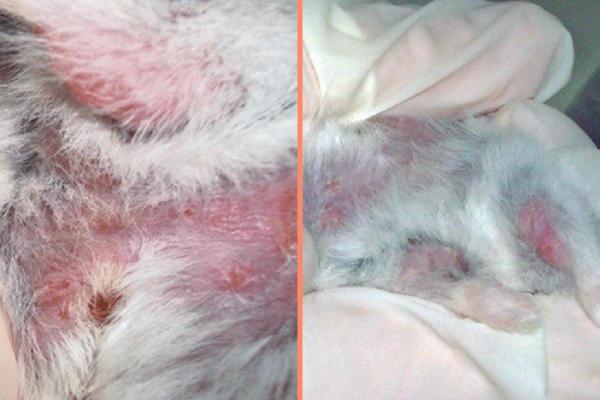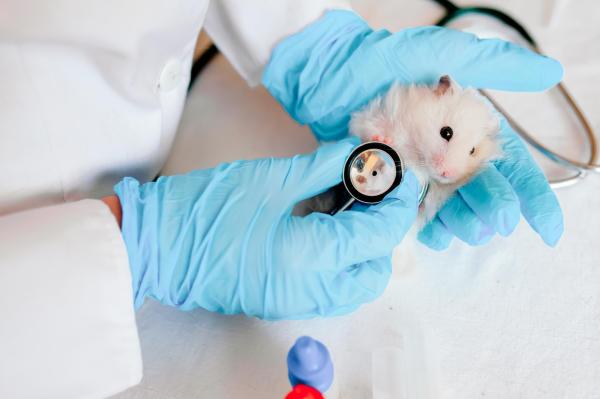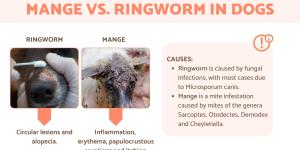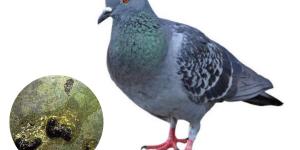Ringworm in Hamsters - Symptoms, Causes and Treatment



See files for Hamsters
Ringworm is a fungal skin infection that causes alopecic lesions with scaling and redness, usually starting on the head and later spreading to other parts of the body. Diagnosis and treatment are simple, but since it is a zoonotic disease, it must be treated carefully to prevent transmission to humans.
In the next AnimalWised article, we will explain everything you need to know about ringworm in hamsters, its symptoms, infection, and treatment.
What is ringworm in hamsters?
Ringworm, also called dermatophytosis, is a skin infection caused by fungi. The medical term for this skin condition is tinea.
In the specific case of hamsters and other rodents, ringworm is caused by the fungi Trichophyton mentagrophytes and Microsporum species. Contrary to what the name ringworm suggests, it is not a ring-shaped worm, although its appearance resembles it. When the contagious fungus enters the habitat, it bores into the skin and hair follicles of a hamster's ears and body. The main cause of ringworm occurrence is excessive wetness and humidity.
It is a zoonosis, which means that it can be transmitted from animals to humans and vice versa. As a result, proper handling of rodents with ringworm is necessary in order to prevent the spread of the infection to their owners or other animals. In the next section, we will discuss what biosecurity measures need to be taken in order to avoid the risk of zoonoses.
Ringworm is a common skin disease in other animals, such as chinchillas. Continue reading this article if you want to know more about ringworm in chinchillas.
Symptoms of ringworm in hamsters
The symptoms of ringworm in hamsters can be observed at the skin level, as it is a dermatological disease. Specifically, the symptoms are as follows:
- Alopecia (hair loss): lesions tend to be roundish
- Scaling and crusting
- Erythema (redness of the skin)
- Unlike other dermatological conditions, ringworm causes minimal or no itching
The lesions can appear anywhere on the body, but they are most commonly found on the face and head. If left untreated, they can spread and appear on other parts of the body.
If you notice that your hamster is not behaving as usual, consider taking them to the vet, as they may be sick. Read this article if you want to learn more about the most common diseases in hamsters.

Causes of ringworm in hamsters
As we have already mentioned, the causative agents of ringworm in hamsters are fungi of the genera Trichophyton and Microsporum. Both types of fungi are typically transmitted from infected hamsters or via contaminated objects such as bedding material.
This fungal infection is usually due to inadequate environmental conditions that favor the growth of these fungi, as well as the presence of stress factors or other situations that lead to immunosuppression in these rodents. The main factors that favor the occurrence of ringworm are:
- An environment with excessive humidity.
- Inadequately ventilated plastic cages.
- Condensation or moisture on the nesting material.
- Stress factors: poor husbandry, sudden change of habitat, etc.
- Overcrowding.
If you want to make sure your hamster cage is well-prepared and ventilated, do not miss this other article on how to prepare a hamster cage: step-by-step guide.

How do hamsters become infected?
Ringworm is a contagious disease transmitted by fungal spores, microscopic forms usually found in clusters around infected lesions and hairs. It is possible for hamsters to become infected through:
- Direct contact with other rodents infected with the disease.
- By sharing contaminated environments or objects, since the spores can survive for up to two years in the environment.
In addition, as mentioned above, ringworm is a zoonotic disease that can be easily transmitted to humans, especially to children. Humans can become infected through contact with infected rodents or contaminated environments, just like animals. The infection can also be transmitted to other domestic animals (dogs, cats, rodents, rabbits, etc.). Therefore, it is important to take the appropriate biosecurity measures to prevent the spread of infection.
Diagnosis of ringworm in hamsters
Diagnosis of ringworm in hamsters may include the following methods:
- Dermatological examinations: As mentioned above, initially round-shaped alopecic lesions appear on the face and can be accompanied by inflammation, scaling, crusting, and erythema. As the lesion progresses, it spreads to other body parts.
- Cytology: A sample should be taken from the margins of the lesion and stained with Periodic Acid Schiff (PAS) or plant stain. This allows the hyphae and/or spores of the fungus to be observed under the microscope.
- Fungal culture and identification: The method involves taking a hair sample (ideally from broken hairs or those near the lesion) and growing it in a selective culture medium for fungi. While it is more sensitive than cytology, it is also more time-consuming, as it must be cultured for at least 10 days and therefore diagnosis can take several weeks.
- PCR: It is similarly sensitive to culture, but has the advantage of providing a diagnosis in a much shorter time, so that specific treatment can be initiated early.
It is worth noting that the use of Wood's ultraviolet lamp is not commonly used to diagnose ringworm in hamsters. In other species, the fungi fluoresce when exposed to ultraviolet light, making this an efficient method of diagnosing ringworm. However, the fungi that cause ringworm in rodents do not fluoresce.

Treatment of ringworm in hamsters
The treatment of ringworm in hamsters is based on the following pillars:
- Topical antiseptics: Lesions should be treated with topical antiseptics such as povidone-iodine or chlorhexidine (always diluted).
- Topical antifungals: such as enilconazole, also known as imazalil and chloramizole. Prepare a dilution of 20 ml of enilconazole per liter of water and apply as a bath every 3 days.
- Oral antifungals: such as griseofulvin, itraconazole or terbinafine.
- Sterilization of the cage: Not all disinfectants are effective against fungal spores. To ensure proper sterilization, use bleach at a dilution of 1/10 or Virkon at a concentration of 1%. The cage must be disinfected at least 2 times a week. All cage material that cannot be disinfected should be removed as it may be a source of reinfection.
When administering treatment to the animal or disinfecting the cage, it is important to follow strict biosecurity measures to avoid zoonotic diseases. Caregivers should wear gloves and wear clothing that covers all parts of the body that could come in contact with contaminated items. In addition, it is essential to isolate the infected animal from other rodents or pets living in the same household, as they too may become infected through contact with the animal or the contaminated environment.
Cultures should be taken periodically and treatment continued until cultures are negative. Generally, the negative result occurs a long time after the lesions have healed. For this reason, it is critical to maintain treatment even when the animal is clinically recovered, otherwise the ringworm effect may reappear after some time.
Hamsters make great pets that can live happy, healthy, and long lives if properly cared for. However, hamsters are also easily stressed animals, as they serve as prey for many predators in the wild. Read this other article if you want to know how to tell if your hamster is stressed and how to provide a positive environment for your hamster to feel safe.
This article is purely informative. AnimalWised does not have the authority to prescribe any veterinary treatment or create a diagnosis. We invite you to take your pet to the veterinarian if they are suffering from any condition or pain.
If you want to read similar articles to Ringworm in Hamsters - Symptoms, Causes and Treatment, we recommend you visit our Infectious diseases category.
- Arruda, M., Gilioli, S., Vilani-Moreno, FR (2001). Experimental dermatophytosis in hamsters inoculated with Trichophyton mentagrophytes in the cheek pouch. Journal of the Institute of Tropical Medicine of São Paulo; 43: 29-32.
- Hata, Y., Amagai, M., Naka, W., et al . (2000). Two cases of Trichophyton mentagrophytes infection contracted from a hamster and a chinchilla . Japanese Journal of Medical Mycology; 41(4):269-273








